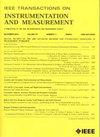基于迁移学习的模拟故障诊断常规训练电路评估与优化
IF 5.6
2区 工程技术
Q1 ENGINEERING, ELECTRICAL & ELECTRONIC
IEEE Transactions on Instrumentation and Measurement
Pub Date : 2025-07-10
DOI:10.1109/TIM.2025.3586376
引用次数: 0
摘要
模拟电路的软故障诊断越来越依赖于神经网络;然而,诊断的准确性从根本上受到提供给这些网络的训练数据质量的限制。大多数研究仍然使用一些长期存在的“基准”训练电路(例如,salen - key带通滤波器和四运放双路高通滤波器)生成该数据,并默认电路选择无关紧要。我们的实验揭示了相反的情况:这些经典拓扑中的组件对称性会产生故障响应重叠,从而产生模糊的特征集,阻碍分类和泛化。为了克服这一限制,我们从结构上修改了原来的四运放大器双置滤波器,以打破导致故障混淆的分量对称性,从而产生更多样化和可分离的故障响应。在故障类别数、激励信号和样本长度一致的情况下,对三种训练电路——萨伦键、原始四运放和优化设计进行了评估。在每个数据集上训练固定的1-D残差网络(ResNet);然后迁移学习在更复杂的跳越电路上测试泛化。除了整体精度外,我们还使用t分布随机邻居嵌入(t-SNE)可视化嵌入,并通过类间质心距离和类内方差量化可分离性。在100个独立试验中,优化后的电路实现了更高的分类精度、最大的平均类间距离和最小的类内方差。此外,它在所有指标中始终显示更小或可比较的标准差(sd),与传统电路相比,表明更稳定和可靠的诊断性能。本文章由计算机程序翻译,如有差异,请以英文原文为准。
Evaluating and Optimizing Conventional Training Circuits for Analog Fault Diagnosis via Transfer Learning
The soft-fault diagnosis in analog circuits increasingly relies on neural networks; yet, diagnostic accuracy is fundamentally constrained by the quality of the training data supplied to those networks. Most studies still generate that data with a few long-standing “benchmark” training circuits (e.g., Sallen–Key bandpass filter and four-op-amp biquad high-pass filter) and tacitly assume that the circuit choice is inconsequential. Our experiments reveal the opposite: component symmetries in these classic topologies create fault-response overlap, producing ambiguous feature sets that hamper classification and generalization. To overcome this limitation, we structurally modify the original four-op-amp biquad filter to break the component symmetries responsible for fault confusion, thereby yielding more diverse and separable fault responses. Three training circuits are evaluated—Sallen–Key, original four-op-amp, and the optimized design—under consistent fault category count, excitation signal, and sample length. A fixed 1-D residual network (ResNet) is trained on each dataset; transfer learning then tests generalization on a more complex leapfrog circuit. Besides overall accuracy, we visualize embeddings with t-distributed stochastic neighbor embedding (t-SNE) and quantify separability through interclass centroid distance and intraclass variance. Across 100 independent trials, the optimized circuit achieves higher classification accuracy, the largest average interclass distance, and the lowest intraclass variance. Moreover, it consistently shows smaller or comparable standard deviations (SDs) across all metrics, indicating more stable and reliable diagnostic performance compared with the conventional circuits.
求助全文
通过发布文献求助,成功后即可免费获取论文全文。
去求助
来源期刊

IEEE Transactions on Instrumentation and Measurement
工程技术-工程:电子与电气
CiteScore
9.00
自引率
23.20%
发文量
1294
审稿时长
3.9 months
期刊介绍:
Papers are sought that address innovative solutions to the development and use of electrical and electronic instruments and equipment to measure, monitor and/or record physical phenomena for the purpose of advancing measurement science, methods, functionality and applications. The scope of these papers may encompass: (1) theory, methodology, and practice of measurement; (2) design, development and evaluation of instrumentation and measurement systems and components used in generating, acquiring, conditioning and processing signals; (3) analysis, representation, display, and preservation of the information obtained from a set of measurements; and (4) scientific and technical support to establishment and maintenance of technical standards in the field of Instrumentation and Measurement.
 求助内容:
求助内容: 应助结果提醒方式:
应助结果提醒方式:


